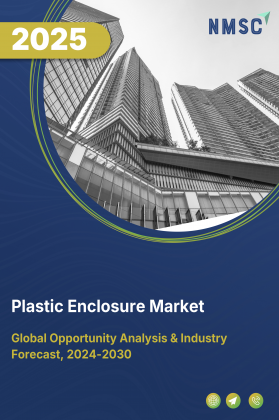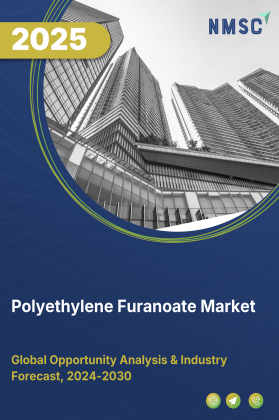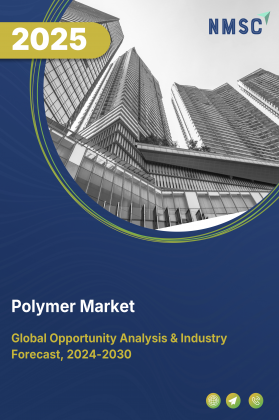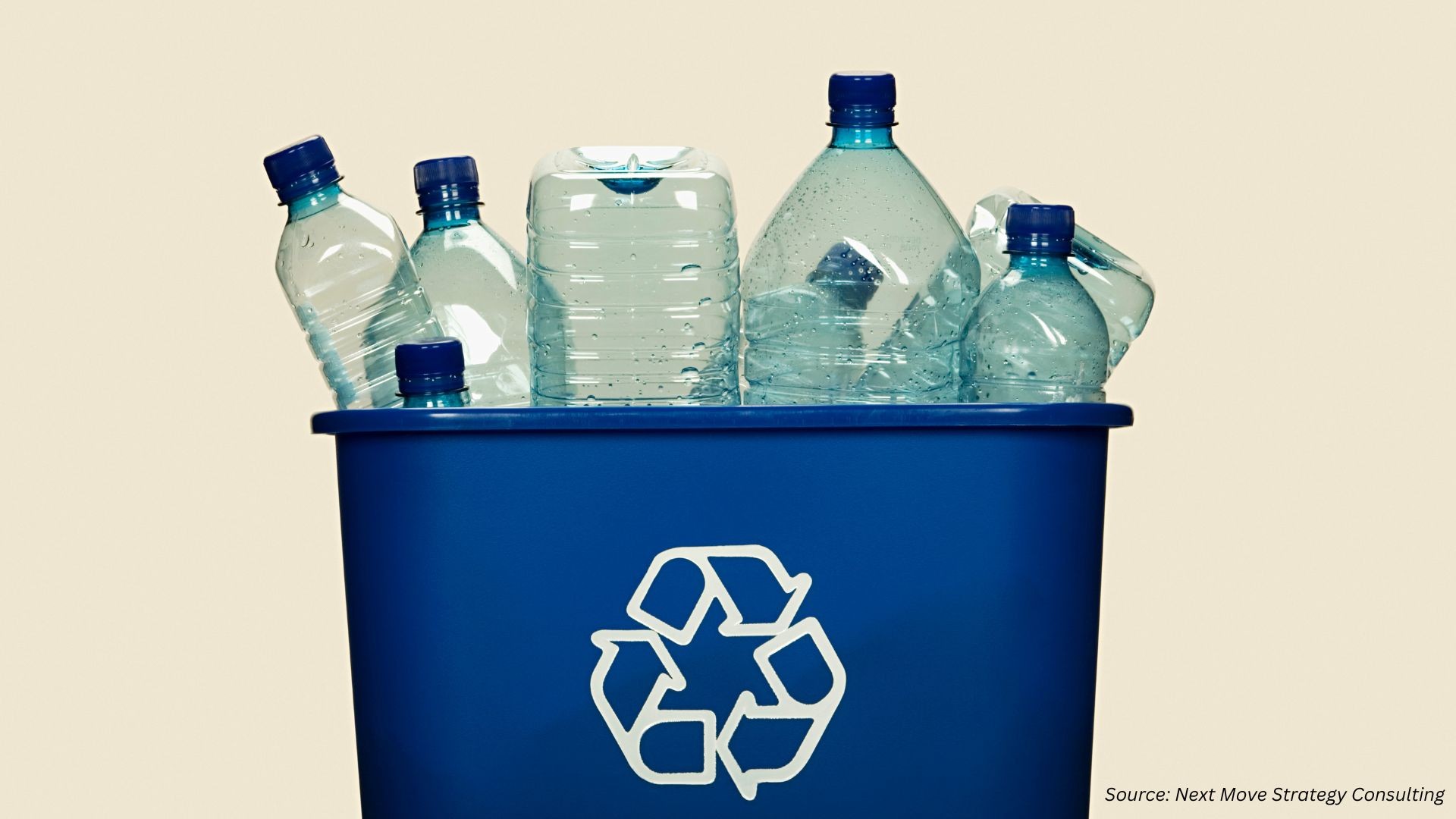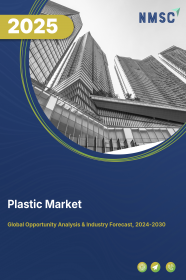
Plastic Market by Type (Polyethylene, Polypropylene, Polyethylene Terephthalate, Polyvinyl Chloride, Acrylonitrile Butadiene Styrene, Polyamide, Polycarbonate, Polyurethane, Polystyrene, Epoxy Polymers, and Other Types), by Process (Molding, Extrusion, Calendaring, Thermoforming, and Others) and Others– Global Opportunity Analysis and Industry Forecast 2023-2030
Market Definition
The Plastic Market size was valued at USD 599.82 billion in 2022 and is predicted to reach USD 831.54 billion by 2030 with a CAGR of 4.8% from 2023-2030. Plastics, also known as polymers, are used to make a wide array of products ranging from paper clips to spaceships for their adaptability, ease of manufacturing, moldability, lightweight, waterproof properties, and low cost. Traditionally, plastics are derived from natural gas and petroleum and transform them into different plastic products through processes like polymerization and molding.
However, manufacturers are now using renewable sources as a result of diminishing polymer sources. Bioplastics are plastics produced from renewable biomass sources such as corn starch, sawdust, vegetable fats and oils, and food waste. Rising concerns about plastic waste and environmental impact, the industry is also facing pressure to adopt more sustainable practices, such as developing biodegradable or recyclable plastics and promoting recycling initiatives. Additionally, the increasing awareness of the environmental impact caused by conventional plastics motivates manufacturers to prioritize the production of recyclable products.
Market Dynamics and Trends
There is an increasing demand for plastic coming from the packaging industry owing to advancements in widespread industries, such as consumer goods, automotive, electrical & electronics, and food & beverage due to its versatility and adaptability of plastic that meets diverse packaging needs, which in turn drives the growth of the market. Moreover, the growing adoption of bioplastics that are more sustainable alternative to traditional plastics and made from renewable materials boosting the growth of the market. For instance, in July 2022, Green Dot Bioplastics introduced 9 new compostable resins for film extrusion, thermoforming, and injection molding. This is in line with the company's goal of achieving faster rates of biodegradability in ambient conditions, while meeting the growing sustainability demands of brand owners and consumers.
In addition, the rapid global boom in the construction industry, which extensively incorporates plastic for pipes, insulation, flooring, roofing, and more, along with their convenient installation process compared to metals or wood, as well as a wide range of color options that enhance their visual attractiveness, drives the expansion of the plastic market. For instance, in 2021, World Bank stated that the global construction industry is valued at USD 27.18 trillion. This rapid growth is boosting the plastic industry, as plastic is a versatile and sustainable material that is used in a variety of construction applications, such as pipes, insulation, flooring and others.
However, growing environmental concern coupled with the strict government regulations on the use of plastic products are factors that are expected to restrain the growth of the market during the forecast period. On the contrary, the advent of biodegradable plastics, also known as biopolymers, which are plastics made from renewable cellulosic biomass such as maize starch, sawdust, plant-sourced fats and oils, and food scraps is expected to create ample growth opportunities for the market in the coming years.
Market Segmentation and Scope of Study
The plastic market report is segmented on the basis of type, process, end-user, and geography. Based on type, the market is classified into polyethylene, polypropylene, terephthalate, polyvinyl chloride, acrylonitrile butadiene styrene, polyamide, polycarbonate, polyurethane, polystyrene, epoxy polymers, and others. Based on process, the market is categorized into molding, extrusion, calendaring, thermoforming, and others. Molding is further divided into injection molding, rotational molding, blow molding, reaction injection molding (RIM), and compression molding. Based on end-user, the market is segmented into aerospace, construction, electrical & electronics, automotive, energy, medical, agriculture, consumer goods, and others. Regional breakdown and analysis of each of the aforesaid segments include regions comprising of North America, Europe, Asia-Pacific, and RoW.
Geographical Analysis
Asia Pacific dominates the plastic market share and is expected to continue its dominance during the forecast period. This is attributed to factors such as the exponentially expanding beverage industry, which drives up demand for plastic water bottles and carbonated drink bottles coupled with the low cost of raw materials in this region. Moreover, the rising demand for the consumer goods industry for manufacturing toys, textiles, and sports goods drives the growth of global market in this region. For instance, in 2020, the China Toy and Juvenile Products Association (CTJPA) reported a 7.5% increase in toy exports compared to the previous year, reaching a total value of USD 33.49 billion.
On the other hand, North America plastic market is experiencing significant growth due to the well-established pharmaceutical industries as plastics are utilized for producing certain medical products including medication bottles, vials, syringes, and others. Moreover, the increasing demand for plastics in aerospace as a replacement for both metal and glass due to their lightweight, corrosion resistance, and ability to be molded into complex shapes, which in turn drives the growth of the market.
In addition, the presence of various prominent companies in plastic industry such as ExxonMobil Corporation, Dow Inc., and Celanese that are engaged in the development of recyclable plastic boost the growth of the market in this region. For instance, in December 2022, ExxonMobil started operations at its first large-scale advanced recycling facility in Baytown, Texas. The facility is capable of recycling up to 30,000 metric tons of plastic waste per year, using a unique method called pyrolysis. The recycled materials can be used to make new plastics, diverting millions of pounds of plastic waste from landfills and incinerators each year.
Competitive Landscape
Various players operating in the plastic industry include ExxonMobil Corporation, Sinopec, Dow Inc., Indorama Ventures, Saudi Aramco, PetroChina, LyondellBasell, Reliance Industries, Braskem, Alpek SA de CV, Borealis, Lotte Chemical, INEOS, TotalEnergies, and Jiangsu Hailun Petrochemical. These market players are adopting various strategies such as innovation and collaboration across various regions to maintain their dominance in the market.
For instance, in July 2022, Dow Inc. partnered with Mura Technology and announced to build multiple facilities in the U.S. and Europe, adding as much as 600 kilotons of aggregate advanced recycling capacity by 2030. Moreover, in April 2022, Amcor merged with ExxonMobil Corporation and enhanced the use of advanced recycled materials in its packaging through ExxonMobil’s Exxtend technology. The polyethylene components are designed to make it possible for Amcor to deliver more recycled material for use in applications for the food and healthcare industries.
Key Benefits
-
The plastic market report provides the quantitative analysis of the current market and estimations from 2023 to 2030. This analysis assists in identifying the prevailing market opportunities to capitalize on.
-
The study comprises of an extensive analysis of the plastic market trends including the current and future trends for depicting the prevalent investment pockets in the market.
-
The information related to key drivers, restraints, and opportunities, and their impact on the global market is provided in the report.
-
The competitive analysis of the market players along with their market share in the market is mentioned.
-
The SWOT analysis and Porter’s Five Forces model are elaborated in the study.
-
The value chain analysis in the market study provides a clear picture of the stakeholders’ roles.
Plastic Market Key Segments
By Type
-
Polyethylene
-
Polypropylene
-
Terephthalate
-
Polyvinyl Chloride
-
Acrylonitrile Butadiene Styrene
-
Polyamide
-
Polycarbonate
-
Polyurethane
-
Polystyrene
-
Epoxy Polymers
-
Others
By Process
-
Molding
-
Injection Molding
-
Rotational Molding
-
Blow Molding
-
Reaction Injection Molding (RIM)
-
Compression Molding
-
-
Extrusion
-
Calendaring
-
Thermoforming
-
Others
By End User Industry
-
Aerospace
-
Construction
-
Electrical & Electronics
-
Automotive
-
Energy
-
Medical
-
Agriculture
-
Consumer Goods
-
Others
By Region
-
North America
-
U.S.
-
Canada
-
Mexico
-
-
Europe
-
UK
-
Germany
-
France
-
Spain
-
Italy
-
Netherlands
-
Denmark
-
Finland
-
Norway
-
Sweden
-
Russia
-
Rest of Europe
-
-
Asia-Pacific
-
China
-
Japan
-
India
-
South Korea
-
Australia
-
Indonesia
-
Singapore
-
Taiwan
-
Thailand
-
Rest of Asia-Pacific
-
-
Rest of World
-
Latin America
-
Middle East
-
Africa
-
KEY PLAYERS
-
ExxonMobil Corporation
-
Sinopec
-
Dow Inc.
-
Indorama Ventures
-
Saudi Aramco
-
PetroChina
-
LyondellBasell
-
Reliance Industries
-
Braskem
-
Alpek SA de CV
-
Borealis
-
Lotte Chemical
-
INEOS
-
Total Energies
-
Jiangsu Hailun Petrochemical




















 Speak to Our Analyst
Speak to Our Analyst



